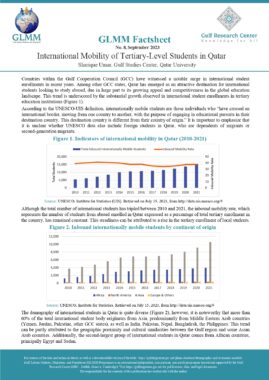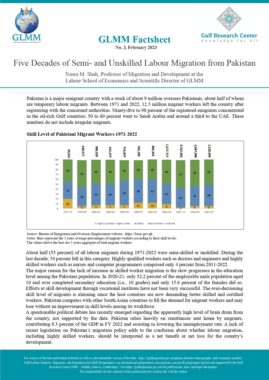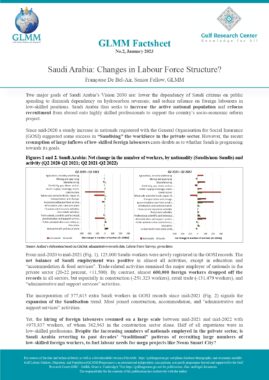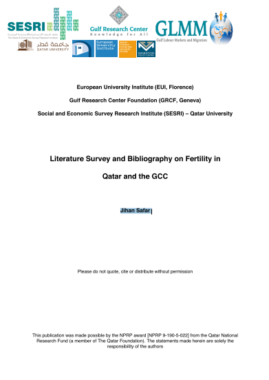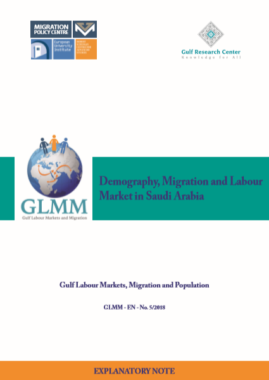Percent distribution of non-Qatari population by duration of stay in Qatar for each municipality (2010)
| duration of | 2 years and less | 3-4 years | 5-9 years | 10-14 years | 15 years and more | Non-Qatari population |
| stay | ||||||
| Municipality | (aged 10+) | |||||
| Doha | 48.0 | 18.4 | 17.5 | 6.7 | 9.4 | 33,561 |
| Al Rayyan | 44.9 | 22.9 | 14.6 | 6.7 | 11.0 | 5,489 |
| Al Wakrah | 58.8 | 17.7 | 12.0 | 5.2 | 6.3 | 183,050 |
| Umm Slal | 42.4 | 26.4 | 13.6 | 6.0 | 11.7 | 35,149 |
| Al Khor | 63.3 | 16.3 | 16.4 | 2.5 | 1.5 | 118,691 |
| Al Shamal | 34.3 | 22.5 | 17.8 | 13.2 | 12.2 | 311,944 |
| Al Da’ayen | 57.5 | 22.9 | 12.9 | 3.2 | 3.5 | 669,679 |
| Total (%) | 50.2 | 19.4 | 16.0 | 6.0 | 8.4 | 1,357,563 |
| 681,497 | 263,367 | 217,210 | 81,454 | 114,035 | 1,357,563 |
Source: census 2010, QSA (tabulated in Qatar Atlas, QSA and the Centre for GIS, Qatar)
1. Technical Notes and Definitions
Reference period for census 2010: the night of April 21st, 2010.
Implementation method: census is based on de jure method; i.e. registering people according to their usual place of residence at time of census.
Populations in transit or visiting Qatar as tourists, as well as residents of public housing or visitors staying in a household for less than two months after night of reference were excluded.
Populations away from usual residence in Qatar for reasons of duty, or on a visit abroad for less than two months, as well as individuals with no personal housing within Qatar staying with a household for more than two months, are counted in their usual/ present residence during census night.
Population of reference: all individuals (nationals and non-nationals) present within the State’s borders during time of reference.
“2010′ census recorded all the residents. Eight questionnaires covering the key census areas were designed, in order to ensure that all units (establishments; buildings; residential units; houses and individuals) are covered by the census.
The eight questionnaires are as follows:
1. Enumeration of buildings;
2. Enumeration of establishments, residential units and houses.
3. Survey of establishments (usage, et cetera);
4. Family living conditions;
5. Survey of labour camp residents;
6. Survey of public housing residents;
7. Survey of hotel residents and transit travellers through airports, ports and land border crossings;
8. Survey of Qataris living abroad.
2. Institution which provides data
Qatar Statistics Authority (QSA), Ministry of Development Planning and Statistics and the Center for GIS, Ministry of Municipality & Urban Planning, State of Qatar
(https://www.mdps.gov.qa/en/Pages/default.aspx for website in English; https://www.mdps.gov.qa/ar/pages/default.aspx for website in Arabic)
3. Data availability
Data are presented in Qatar Atlas, published by the Qatar Statistics Authority (QSA) and the Center for GIS, Ministry of Municipality & Urban Planning, State of Qatar
https://www.mdps.gov.qa/en/statistics1/GIS/Pages/atlas.aspx
The present data are tabulated and mapped at the municipality and zone levels:
http://gsa.qsa.gov.qa:8080/QATLAS/LOADPDF.aspx?pdfFileName=P242-243.pdf
Last date of access: 19 February 2014.
Similar Posts:
- Qatar: Population by nationality (Qatari/ non-Qatari) at dates/ years of census (1970-2015)
- Population by nationality (Qatar/ non-Qatari), sex and municipality of residence (Qatar, 2010)
- Qatar: Population by nationality (Qatari/ non-Qatari) and sex at dates/ year of census (1986-2015)
- Working age population by nationality (Qatari/non-Qatari) and sex (2010)
- Population aged 10 and above by nationality (Qatari/ non-Qatari), sex and level of education (2010)
Tags: Duration Stay, Foreign Population, Qatar

































